Bowers & Wilkins PI7 vs. AirPods Pro: Which wireless earbuds should you buy?
This Bowers & Wilkins PI7 vs. AirPods Pro face-off will determine which is the better pair of noise-cancelling earbuds
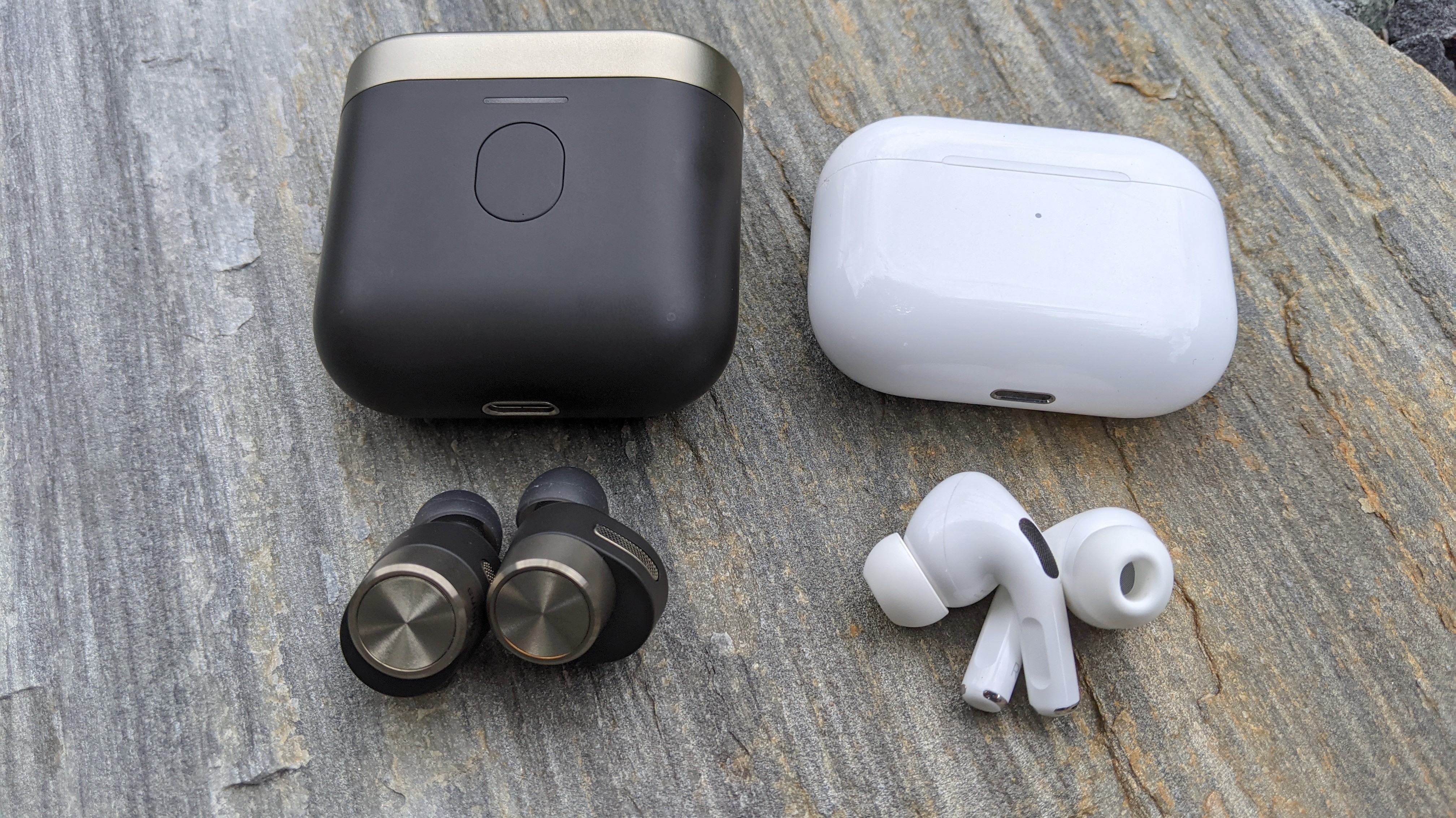
This Bowers & Wilkins PI7 vs. AirPods Pro face-off compares two of the industry’s best noise-cancelling earbuds, helping you decide which model is best for your needs and budget.
Recently launched, the Bowers & Wilkins PI7 acts as the true wireless variant of the popular Bowers & Wilkins PX7 noise-cancelling headphones. These buds not only come with top-tier active noise cancellation, but also boast Dual Hybrid Drive units with individual amplifiers and aptX Adaptive codec support to deliver class-leading sound. B&W also employed premium materials with sleek detailing to form an aesthetically pleasing design.
- The best wireless earbuds you can buy
- Make a saving with the best cheap wireless earbuds
- We've tested the best outdoor speakers
The AirPods Pro, likewise, is one of the best pairs of ANC earbuds you can buy, thanks to its customizable fit, impressive active noise cancellation, and a wide set of iOS-friendly features that continues to grow with every new software update. Most importantly, this third-gen version brings forth some vast audio upgrades, including adaptive sound and other personalized modes that enhance the listening experience.
After a week of testing, we've compared both models in every major category to determine the better earbuds investment. Read on to see whether the PI7 can overtake the AirPods Pro, and check out our Bowers & Wilkins PI5 vs. AirPods Pro comparison to see how the PI7's little sibling stacks up as well.
Bowers & Wilkins PI7 vs. AirPods Pro: Specs compared
| Header Cell - Column 0 | Bowers & Wilkins PI7 | AirPods Pro |
|---|---|---|
| Price | $399 | $249 |
| Wireless Charging Case | Yes | Yes |
| Chip | Qualcomm QCC5126 | H1 |
| Battery Life (Rated) | 4 hours (ANC on), 20 hours (with charging case) | 4.5 hours (ANC on), 5 hours (ANC off), 24 hours (with charging case) |
| Water Resistance | IP54 | IPX4 |
| Case Size | 2.3 x 1.1 x 2.2 inches | 1.8 x 0.9 x 2.4 inches |
| Case Weight | 2.1 ounces | 1.6 ounces |
| Special features | Adaptive active noise cancellation, adjustable ambient listening mode, aptX Adaptive support, Soundscapes, wireless adapter functionality | Active noise cancellation, transparency mode, adaptive EQ, spatial audio, automatic switching, customizable fit, audio sharing, announced messages with Siri, “Hey Siri” voice-activated assistance, wireless charging case |
Bowers & Wilkins PI7 vs. AirPods Pro: Price
At $249, the AirPods Pro isn’t cheap, but is reasonably attainable versus the even higher-priced PI7, which carries a $399 MSRP.
Even more enticing is that Apple’s buds are often on sale; some retailers have dropped the price down to as low as $180. Don’t expect the PI7 to receive a generous markdown any time soon, since it just recently launched.
To stay up on the latest Apple and B&W deals, we recommend bookmarking our best cheap AirPods deals and best headphones deals pages.
Winner: AirPods Pro
Bowers & Wilkins PI7 vs. AirPods Pro: Design
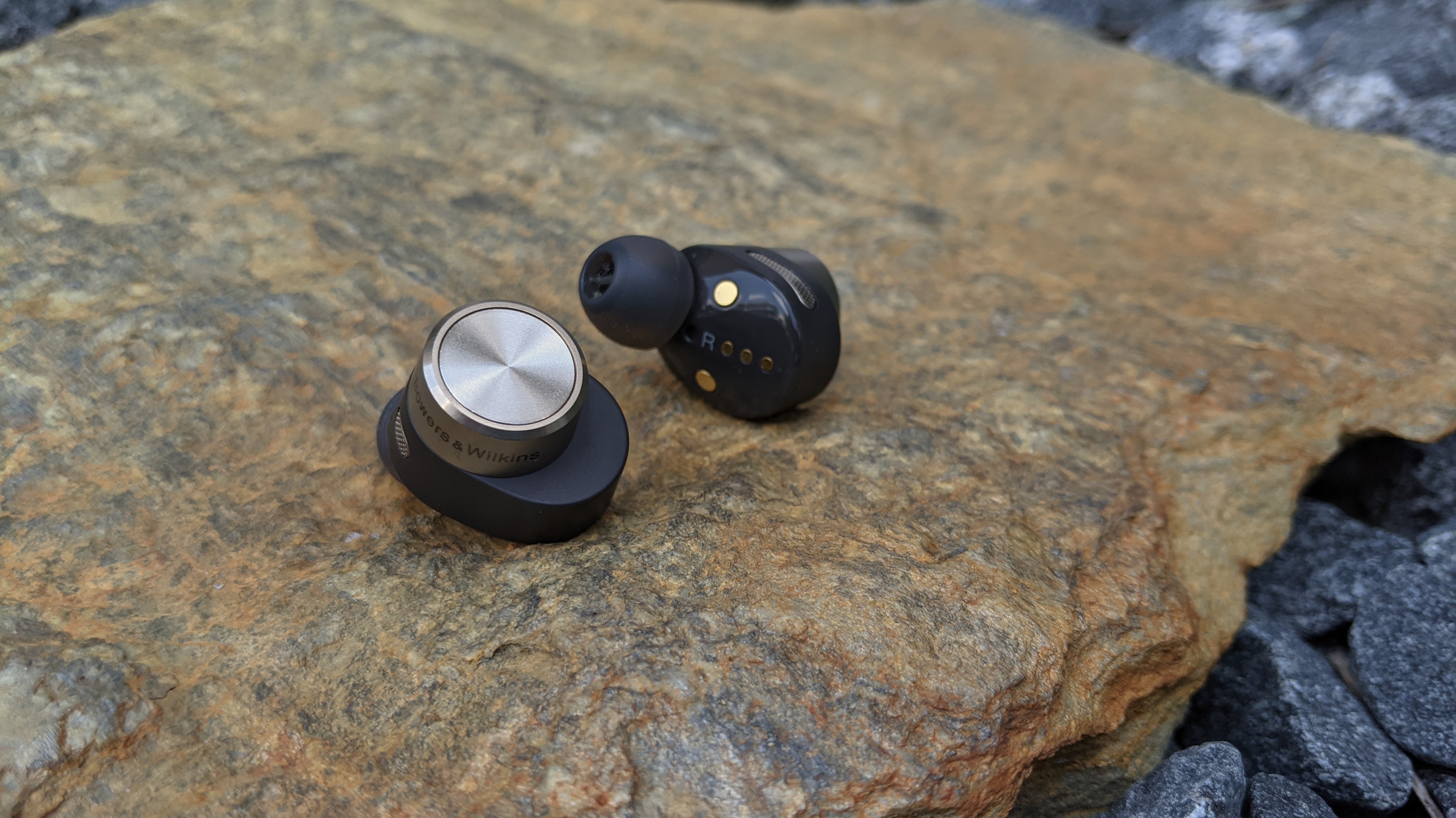
The PI7 is a beauty that pulls off the luxe and durable look exceptionally well. Matte plastic and aluminum make up its construction, and the touch panel takes on the form of a protruding cylinder, which kind of resembles a dial. The buds come with an IP54 rating to protect the internals from dust and moisture damage; they can sustain light splashes, rain, sweat, and even dirt.
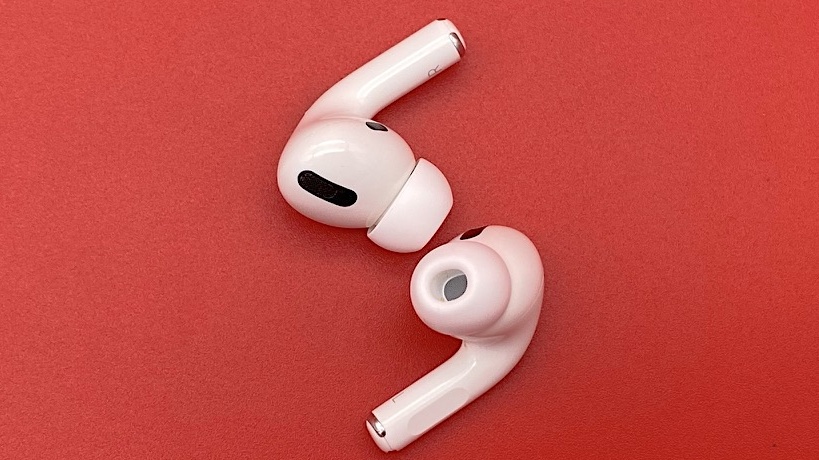
Some people love the AirPods' long-stem silhouette and others aren’t fond of it. We fall under the latter. That’s not to say the AirPods Pro’s design isn’t an upgrade from the standard Apple AirPods, because it certainly is. The stems have been shortened, giving the buds a more discrete appearance. Niche details like the black vents and indentations that indicate the Force Sensors make this version distinguishable even among the best fake AirPods. Apple earns recognition for implementing IPX4 water resistance as well, though this doesn't signal the same level of protection that the PI7 has.
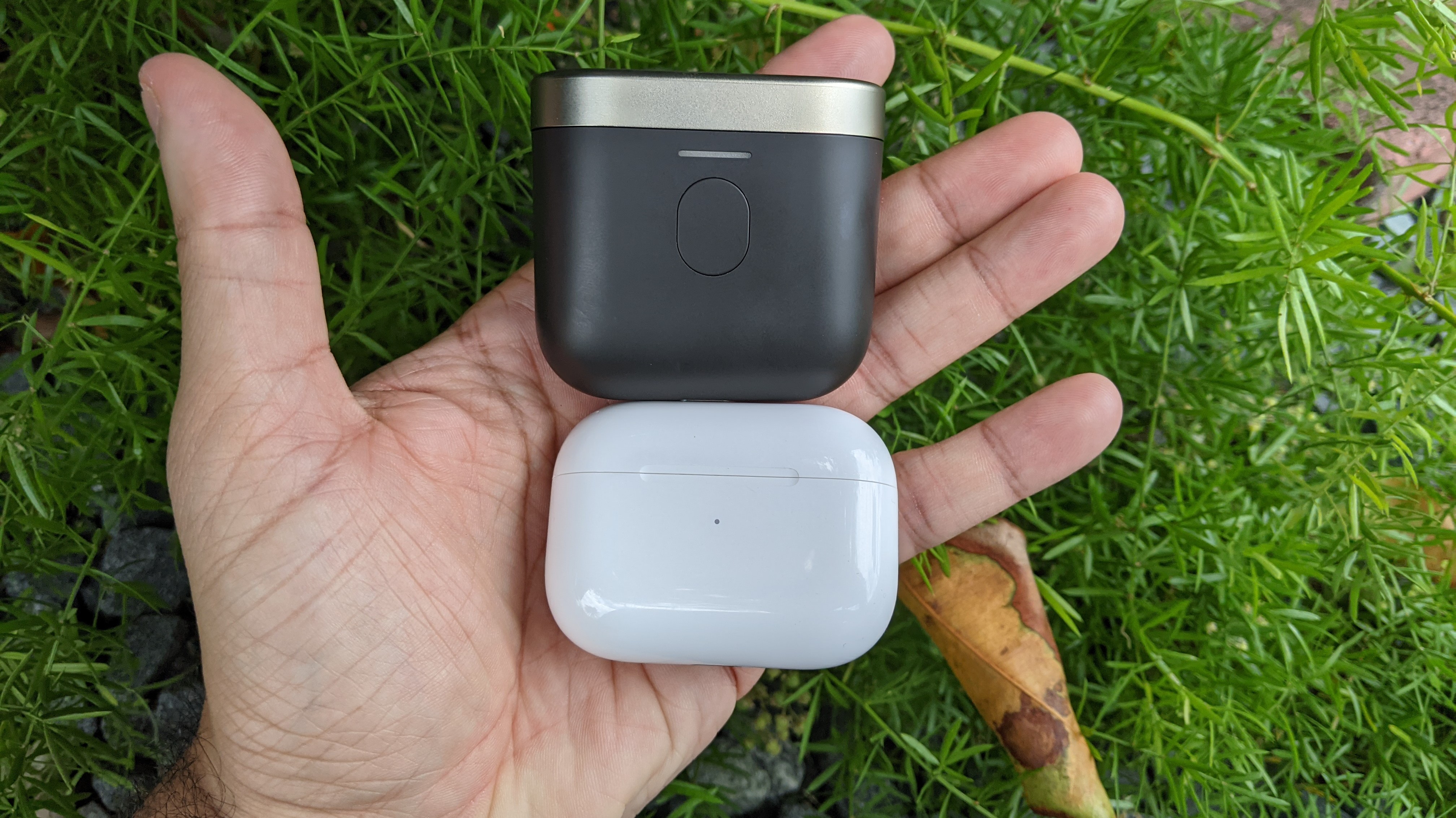
The PI7’s charging case does lack in build quality compared to the buds. It’s also long and might not tuck into most denim pockets, though you can toss it into any commuter bag and travel care-free. At least it is more attractive than the AirPods Pro’s charging case, even if Apple’s white block is sturdier and more pocket-friendly. We also like that B&W added an extra button to the front that the company says will serve a future function, which will likely be added via firmware update.
Comfort and fit are awarded to the AirPods Pro, which Apple took serious liberties perfecting. The now-included ear tips are difference-makers that produce a tight seal around the ears for solid isolation and stability.
In addition, the longer sound port allows for simple insertion. But where Apple really nailed it is the Ear Tip Fit Test, a special feature developed for the AirPods Pro that calibrates the buds to determine the best tips for the listener.
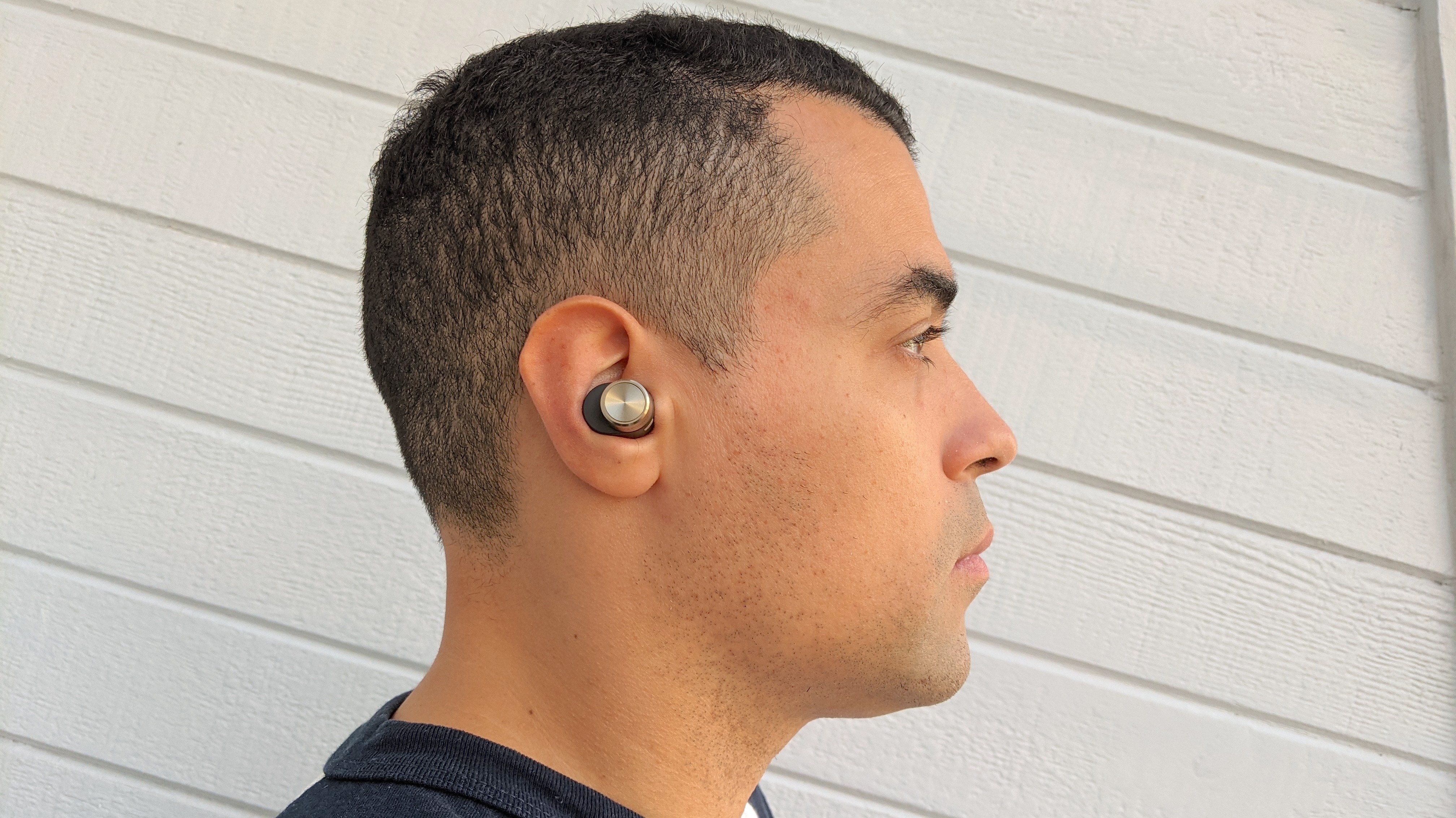
The PI7 provides moderate comfort and fit, though its design is not as ergonomically benefitting as the AirPods Pro. You can wear the buds for about 1 to 2 hours before fatigue sets in, as the elongated sound port pinches the front part of the ear. B&W’s silicone tips do keep the buds locked in, which is reassuring when on the go.
Winner: Bowers & Wilkins PI7
Bowers & Wilkins PI7 vs. AirPods Pro: Controls
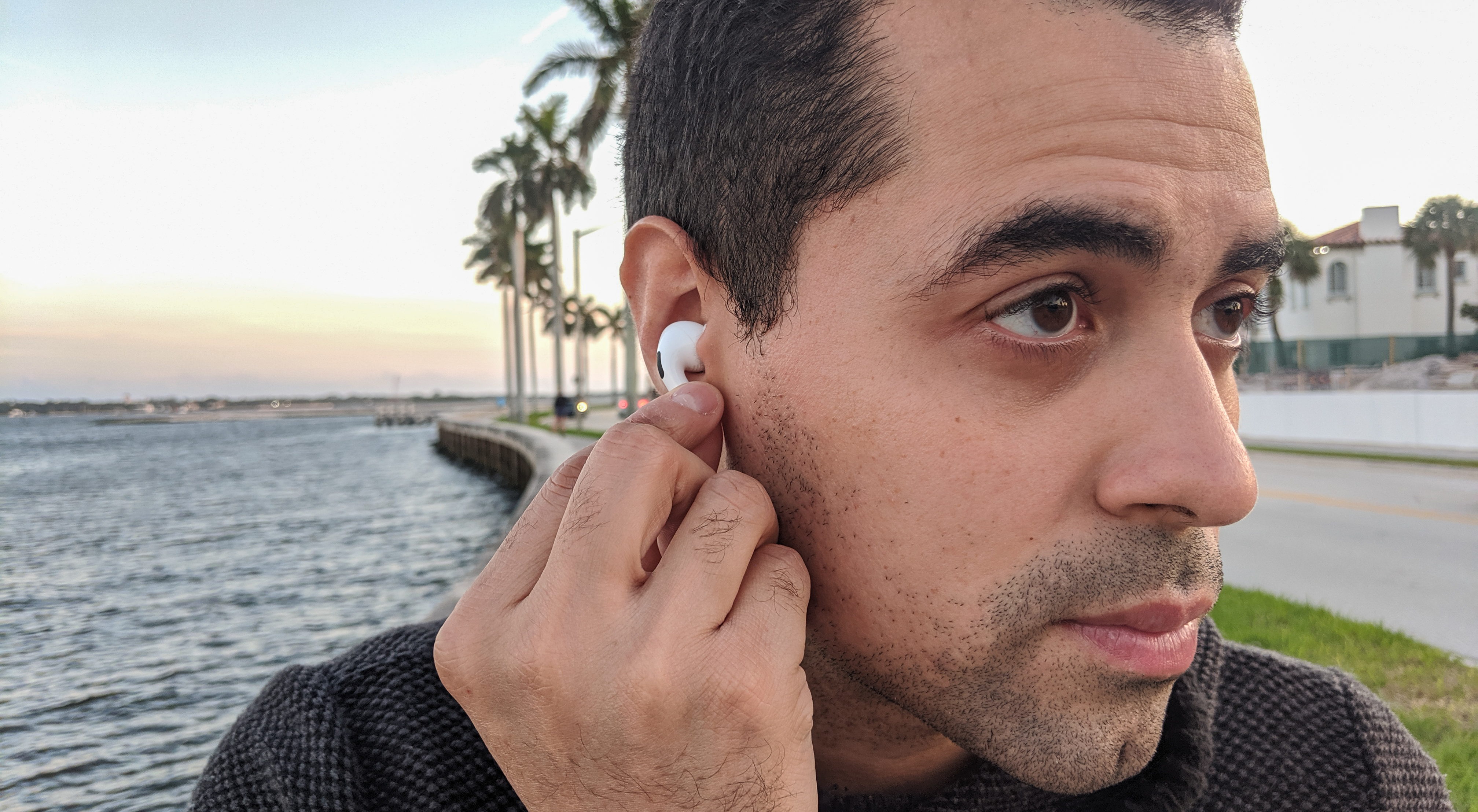
Two words for you: “Hey Siri.” Apple’s voice activation feature alone gives the AirPods Pro this round. The only thing more amazing than the ability to speak the phrase and execute commands hands-free is the speed at which the AI bot responds to them. Sure, the feature is only exclusive to Apple devices like iPhone, iPad and MacBook Pro, though you can download third-party apps like Assistant Trigger on Google Play to use the digital assistant function on Android devices.
It would be a crime to overlook the AirPods Pro’s Force Sensor, which is hands down the best input system on any set of wireless earbuds. Every press produces satisfying tactility to ensure you that intended commands are being met. It’s also cool that the controls are compatible with Apple TV, letting you play/pause content directly from the buds. A motion sensor was added as well to auto-detect when the buds are removed and automatically pause music. If we have any complaint, it's the limited number of controls that can be assigned to each bud; you can't use the Force Sensors to adjust volume, for instance.
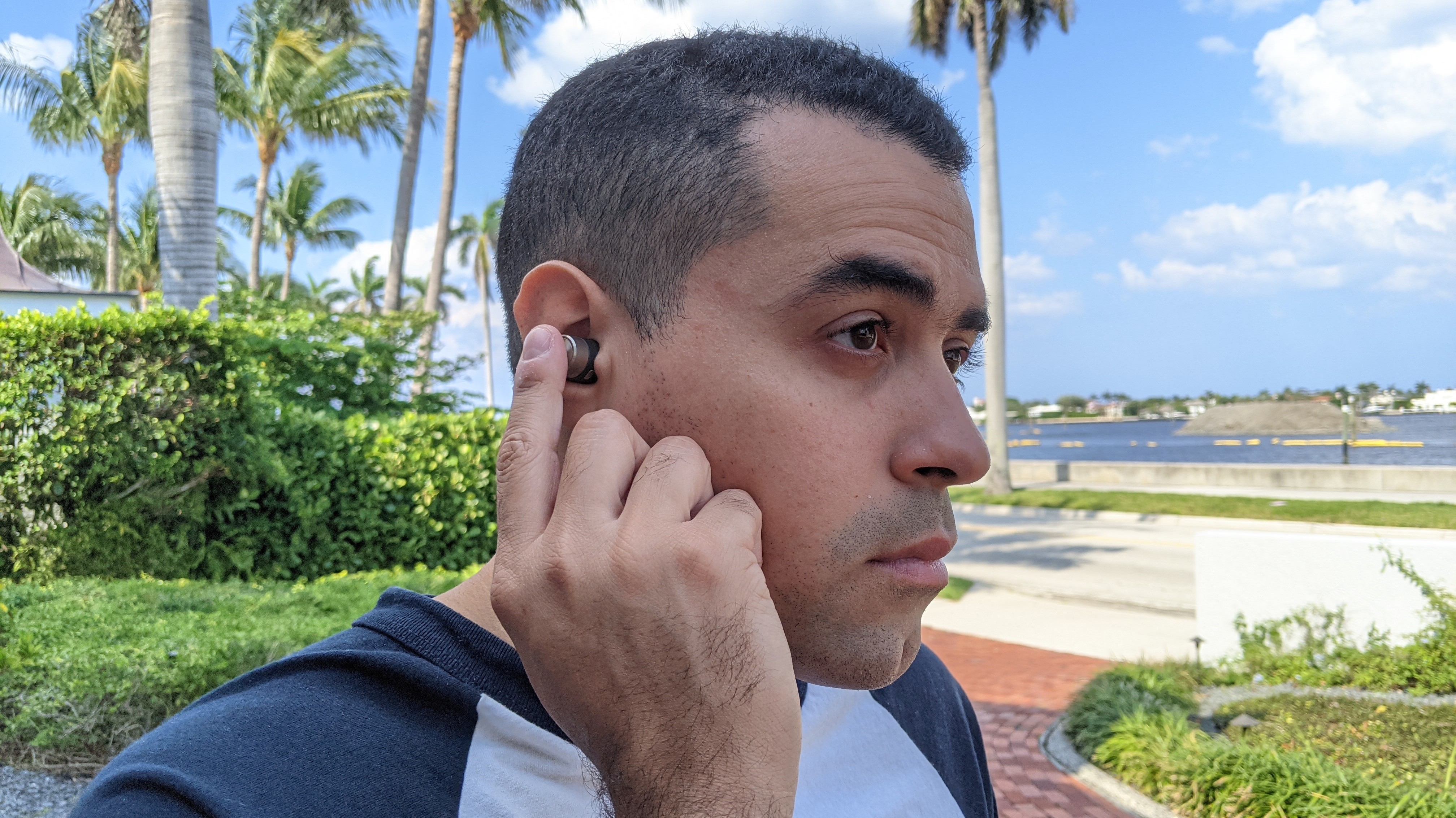
The PI7 has its own responsive control scheme consisting of touch input, on-ear detection, and voice assistance, the latter being the most proficient. B&W’s robust six-mic array demonstrates excellent speech recognition to register long-winded commands. You won’t have any issues operating the PI7, but the Force Sensors are still enough to give Apple the advantage.
Winner: AirPods Pro
Bowers & Wilkins PI7 vs. AirPods Pro: Sound quality
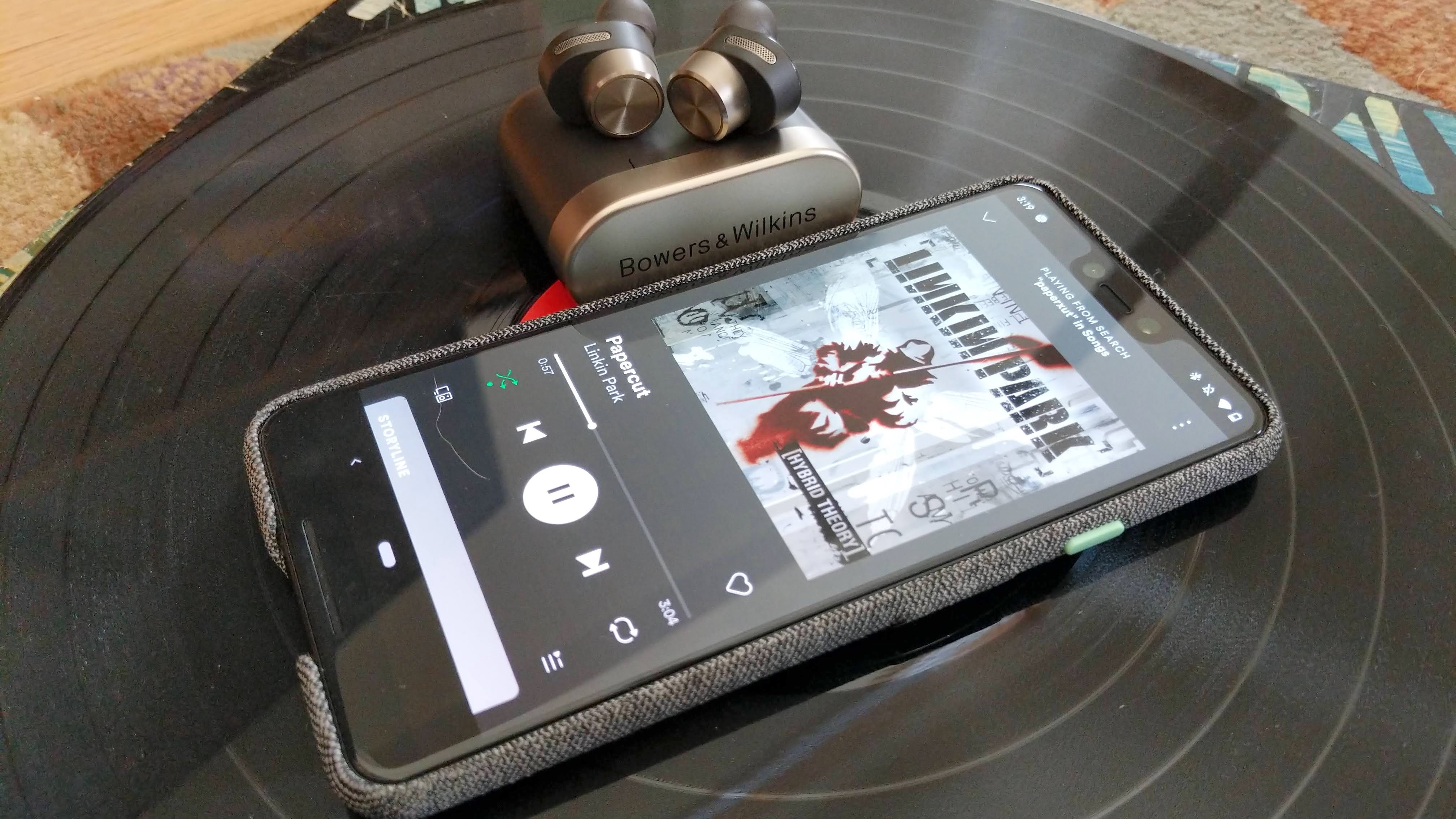
There are a few excellent-sounding wireless earbuds out there like the Master & Dynamic MW08, but the PI7 arguably ranks at the top. B&W spared no expense giving these buds elite sound representation, from the Dual Hybrid Drive units with individual amplifiers for each driver to 24-bit sound and aptX Adaptive codec support for streaming hi-fidelity tracks on services like Qobuz and Tidal.
Recordings still sound exceptional whether played from your personal library or on standard streaming platforms like Spotify. Bass has an impactful presence that complements contemporary music genres, and mids and highs sound accurate, allowing you to hear subtle nuances in complex recordings.
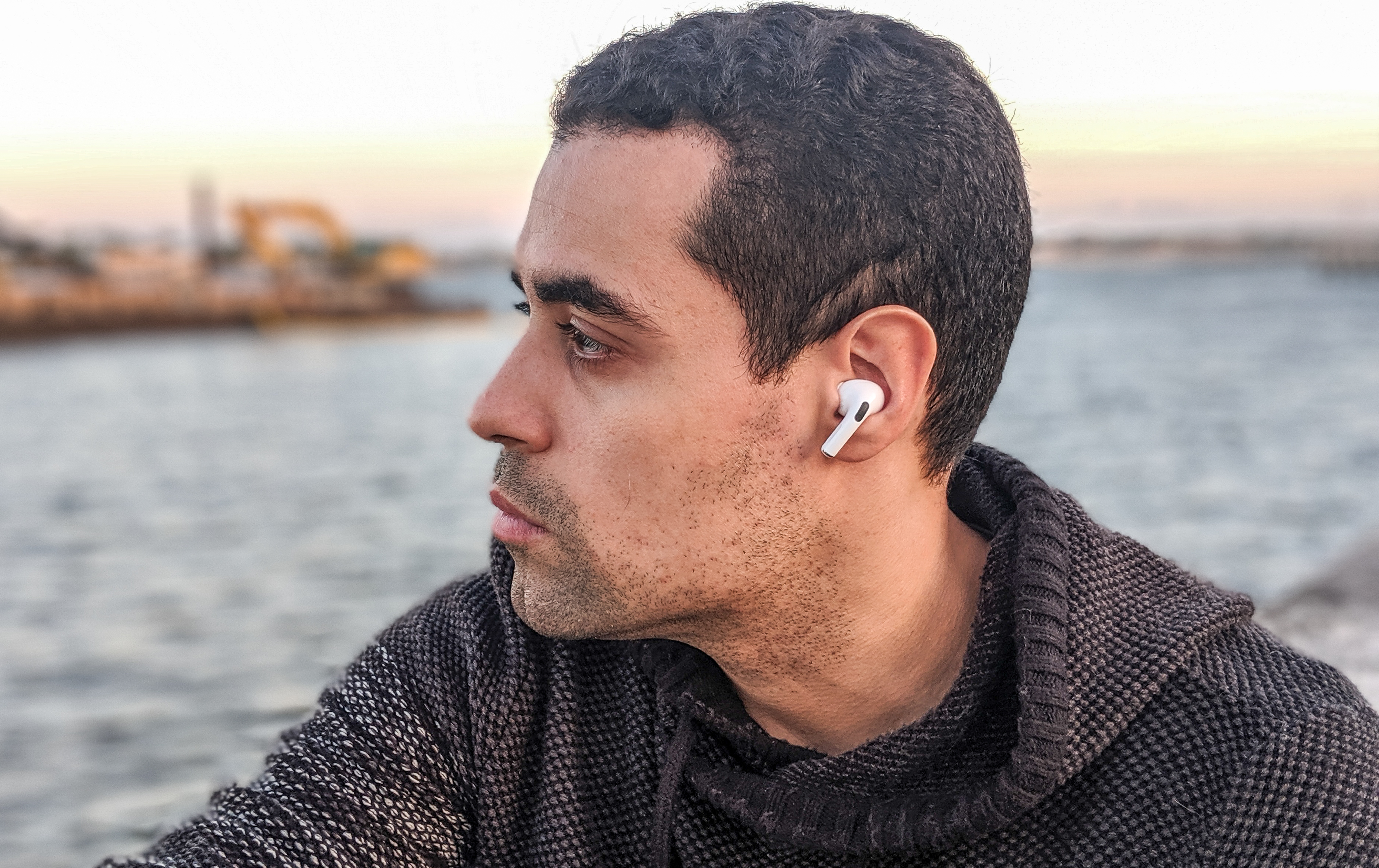
Apple’s adaptive EQ grants the AirPods Pro a significant sonic boost that was lacking on the standard AirPods. Bass remains emphasized, but Apple did a better job of balancing it out to not compromise the midrange. Highs don’t exactly shine, but the sound signature is satisfying enough to enjoy most music genres and other content.
Each model also has its own killer sound feature. While the AirPods Pro comes with spatial audio, which creates immersive 360-degree sound for compatible video content, the PI7's charging case can cleverly act as a wireless adapter to stream music in aptX when connected to an analog audio output. For example, you could plug the charging case into an on-flight entertainment system and get the sound wirelessly delivered to your earbuds.
Winner: Bowers & Wilkins PI7
Bowers & Wilkins PI7 vs. AirPods Pro: Active noise cancellation
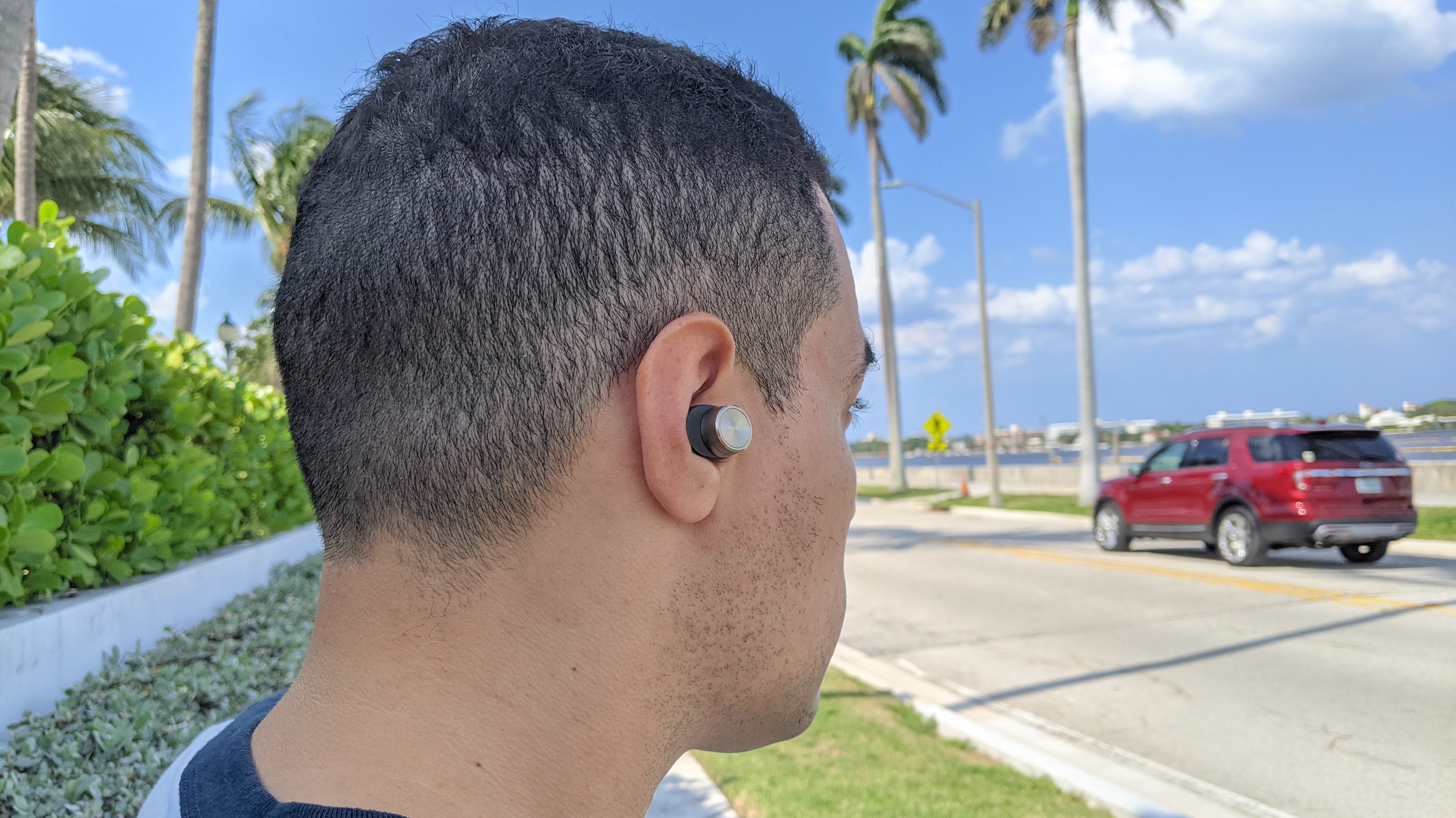
The AirPods Pro stood strong as the second-best noise-cancelling solution in the category. Then the PI7 came along, giving the Bose QuietComfort Earbuds the greatest run for its money. Each bud uses three mics to block out a vast number of ambient noises, while also doing an admirable job of minimizing high-frequency sounds that are unavoidable.
Most indoor fracas will go unnoticed, such as centralized AC units, door buzzers, and loud TVs. Being outside is just as rewarding with the PI7 exhibiting strong wind resistance to diminish whooshing effects caused by gusty conditions and speeding cars. More perceptible sounds like baby cries, sirens, and construction tools will be audible, though none are distracting enough to pull you way from what’s playing on your iPhone 12.
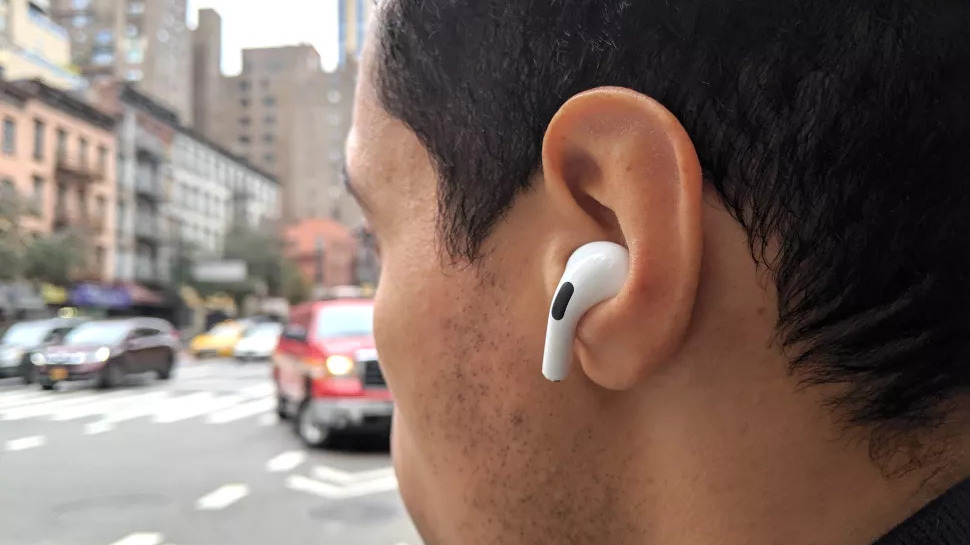
The AirPods Pro falls to third place on the ANC true wireless rankings, but that doesn’t diminish its noise-cancelling value. Apple’s two-mic noise-cancelling array can handle most external sounds in any environment. This includes chatty neighbors, loud TVs, and even the hum of a jet engine. We did notice the AirPods Pro struggles with high-frequency sounds; B&W’s ANC technology is slightly more effective there.
Transparency modes are available on either set of buds to eavesdrop on conversations and hear your surroundings more clearly. However, the PI7 does something the AirPods Pro doesn’t, which is blend both ANC and Transparency modes together to make ambient noises more distinguishable and less harsh on your ears. It’s well-engineered, and it works.
Winner: Bowers & Wilkins PI7
Bowers & Wilkins PI7 vs. AirPods Pro: Special features and apps
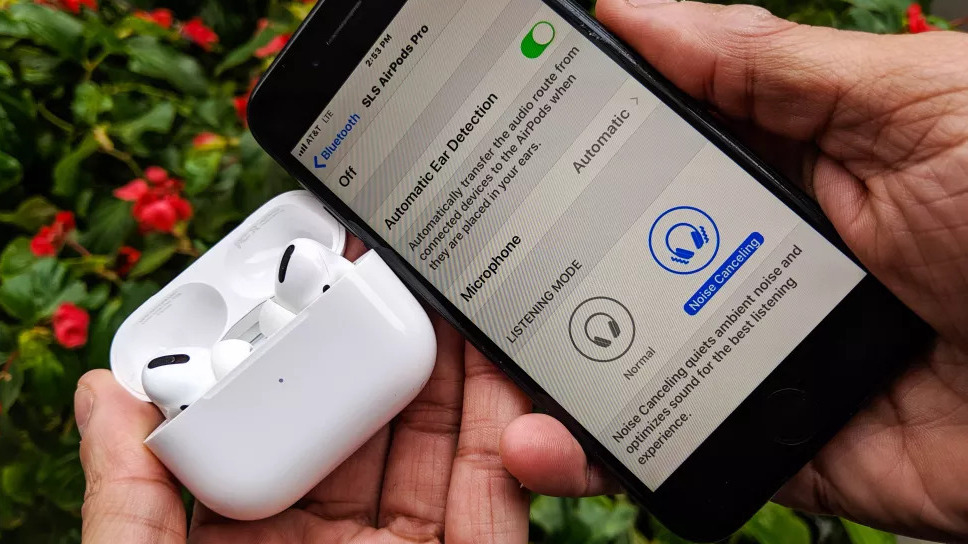
Apple played the long game with the AirPods ecosystem and won by optimizing its hardware to make the most of new software. With the proprietary H1 chip at the helm, the AirPods Pro takes advantage of seamless integration with all iOS and macOS devices, as well as exclusive features that enhance the user experience.
Spatial audio takes top billing, though there are some other cool audio modes at your disposal. These include the ability to personalize sound via EQs in the iPhone settings, audio sharing between two pairs of Apple or Beats headphones, and a Headphone Accommodations setting that tailors sound to your hearing. Other notable features like automatic switching and using your Apple Watch or MacBook Pro to control the buds are highly appreciated. There are many more hidden AirPods Pro tricks worth checking out too.
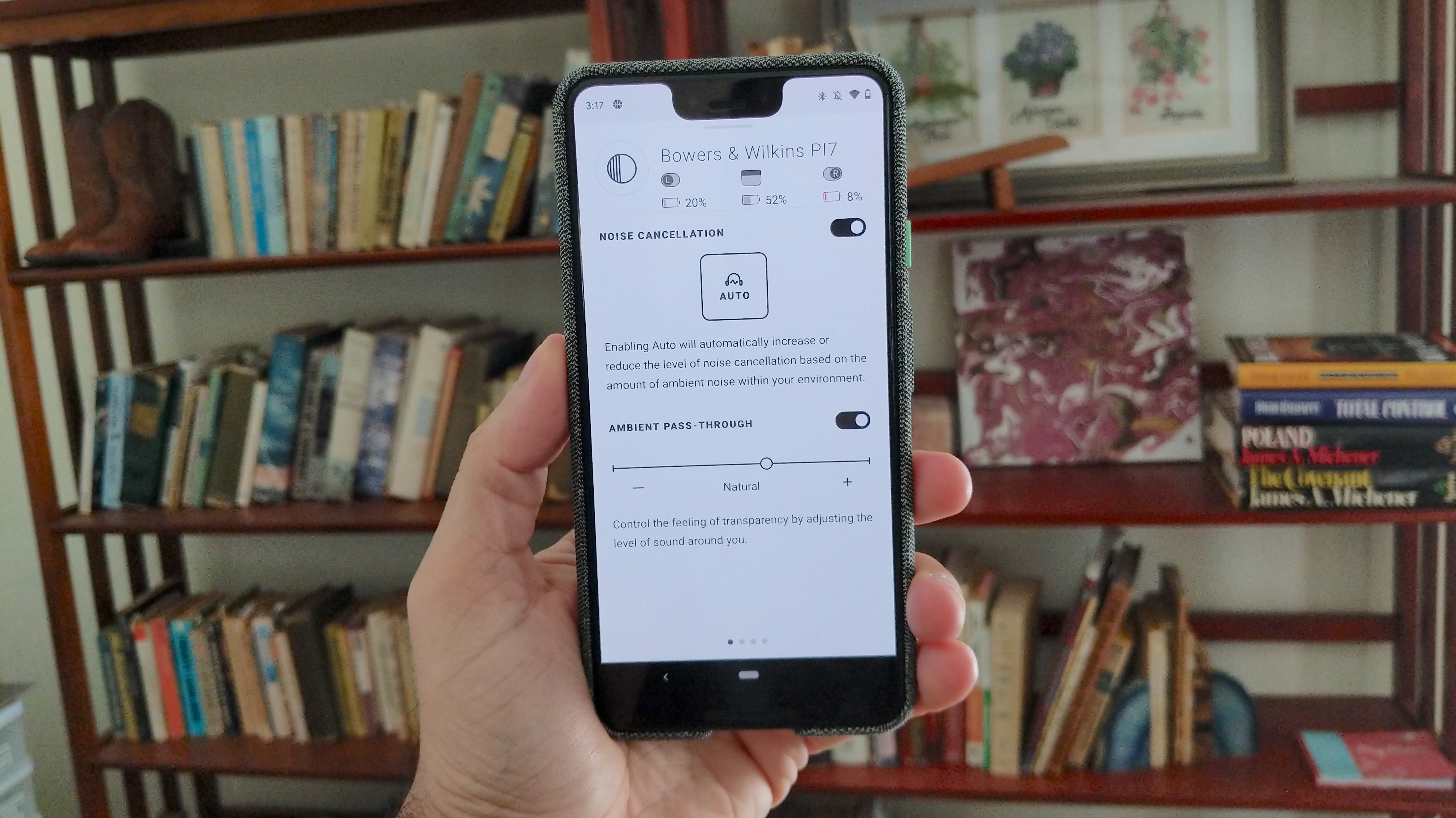
We already mentioned what the PI7’s wireless charging case can do from an audio perspective. Aside from that, B&W’s flagship buds are light on extra features. The companion app does have a Soundscapes mode that masks the noise around you with nature sounds, and it sounds great, though it’s something you can find on other competitors. Rounding out the app are toggle controls, battery level indicators for both earbuds and the charging case and firmware updates. Furthermore, there are some features missing from the app that seems to be exclusive to the PX7, like a voice prompt setting and Standby timer to place the buds in sleep mode when inactive.
Connectivity is fantastic on both devices, though the H1 chip makes pairing to iDevices instantaneous when opening up the AirPods Pro’s charging case. The PI7 also has a range issue, and causes dropout when teetering around the 15-foot mark.
Multipoint technology, which allows you to connect a pair of wireless earbuds to two devices simultaneously, isn’t available on either earbuds.
Winner: AirPods Pro
Bowers & Wilkins PI7 vs. AirPods Pro: Call quality
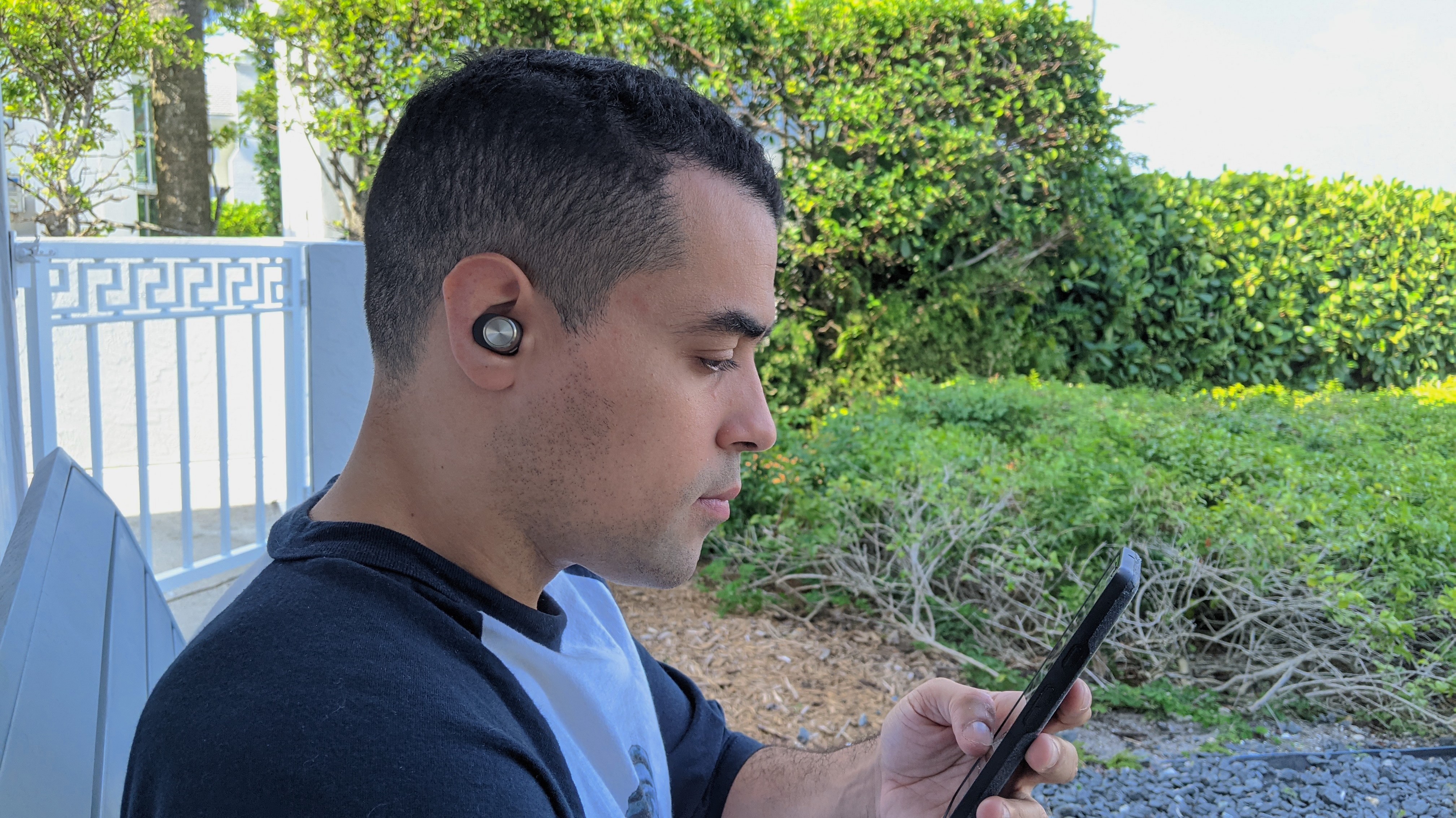
High call quality has been a staple of the AirPods series, and this has only got better on the AirPods Pro. Apple’s mic system is exceptional at picking up vocals and prevents a good number of environmental distractions from entering conversations. It also does a fantastic job with minimizing wind noises. High-frequency sounds do make their presence known, though you’ll still be able to make out what others are saying. All in all, it's one of the best headphones with a mic for voice and video calls.
The PI7 is a satisfactory calling headset, depending on where you make and take calls. Indoors is where calls sound best with conversations sounding fairly clear in quiet settings. There is some cutout and crackling that occurs, especially when outside due to poor wind resistance. Another issue is the low volume.
Winner: AirPods Pro
Bowers & Wilkins PI7 vs. AirPods Pro: Battery life

Sadly, both models leave much to be desired on battery life. Be that as it may, the AirPods Pro edges out the PI7 at 4.5 hours with ANC on; its superior battery management can squeeze out every bit of juice for optimal use. Apple also claims that disabling ANC will extend playtime to 5 hours.
The good news is that you won’t see the battery levels drop drastically when running multiple features in the background. The H1 chip gets you 50% more talk time as well. As for the charging case, it holds up to 24 hours, equating to about 5 additional charges.
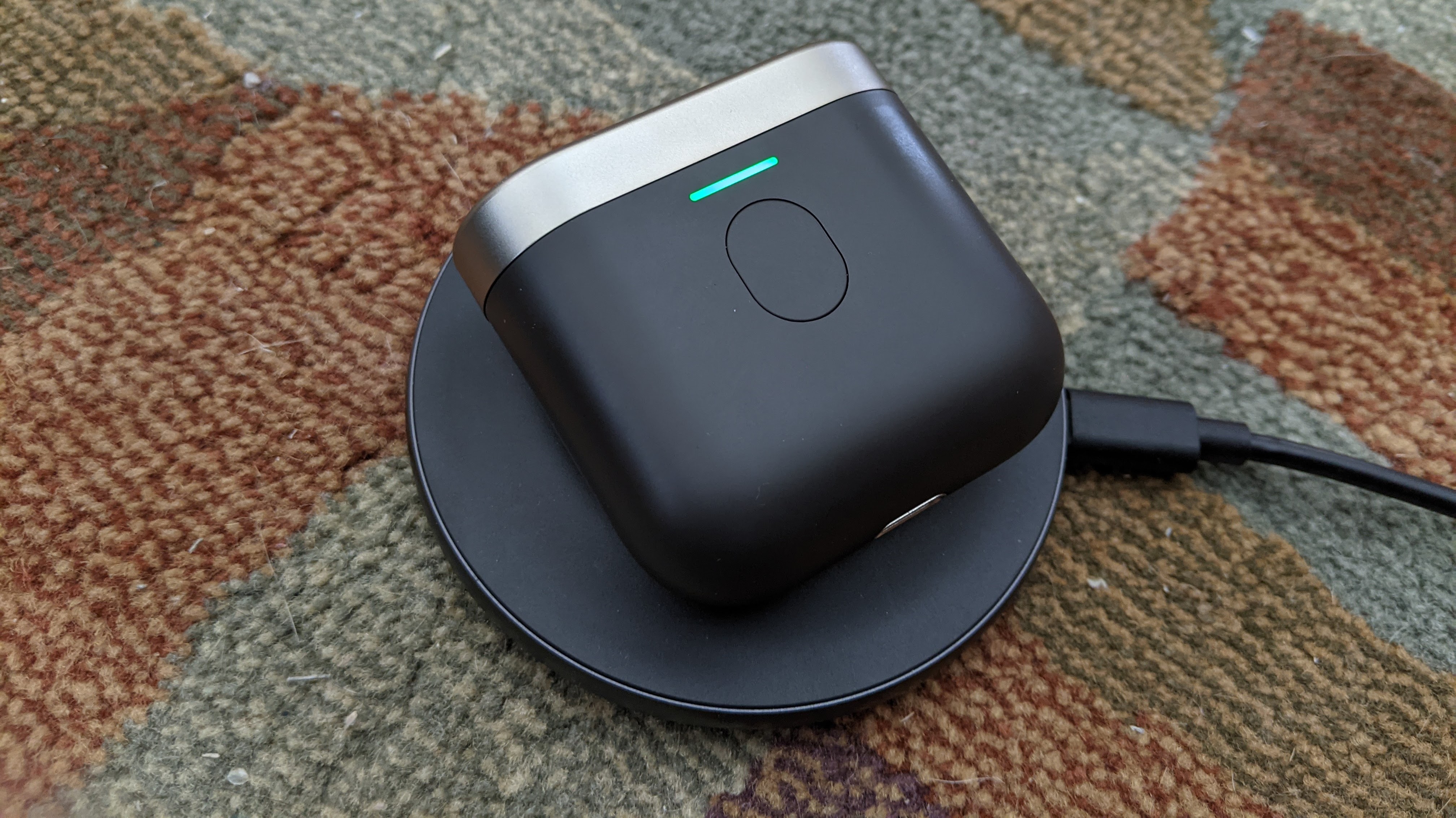
The PI7 disappoints at 4 hours with ANC on. B&W has yet to disclose the playtime when turning off ANC, but our testing saw the buds last 30 minutes longer. If you think the large charging case will make up for the buds’ poor battery life, guess again because it maxes out at 20 hours, falling short of the industry-average playtime set by Apple’s case.
Wireless charging is available for both models' cases, as is quick charging. The AirPods Pro generates 1 hour of use on a 5-minute charge and the PI7 gets you 2 hours on a 15-minute charge.
Winner: AirPods Pro
Bowers & Wilkins PI7 vs. AirPods Pro: Overall winner
We’re not going to lie – price does factor heavily into the equation. That being said, even if the PI7 and AirPods Pro shared the same MSRP, Apple’s pair of high-end buds would still have more going for it.
The adaptive EQ is a nice sonic improvement from the previous AirPods, and the inclusion of spatial audio is a game-changer for those who want 3D sound. Apple put effort into giving the AirPods Pro an ergonomic design that promises a secure fit, which can be personalized via Ear Tip Fit Test. Noise cancellation is also surprisingly great. The short playtimes and dangling-stem silhouette aren’t enticing, but with the knowledge that you're saving $150 compared to the PI7, these are compromises you can live with.
| Header Cell - Column 0 | Bowers & Wilkins PI7 | AirPods Pro |
|---|---|---|
| Price and value (5) | 3 | 4 |
| Design (15) | 13 | 11 |
| Controls (10) | 7 | 9 |
| Audio quality (20) | 20 | 17 |
| Active noise cancellation(20) | 18 | 17 |
| Special features and apps (15) | 9 | 13 |
| Call quality (5) | 3 | 5 |
| Battery life (10) | 6 | 7 |
| Total score (100) | 79 | 83 |
Bowers & Wilkins stuck to its strengths with the PI7, offering superior sound and noise cancellation in a beautiful package. Audio performance excels, and having the charging case retransmit audio to the buds when connected to a compatible output is quite ingenious. However, it’s tough to look past the poor battery life and lack of common features for the price.
- More: Want more audio goodness? Check out the best desktop speakers
Sign up to get the BEST of Tom's Guide direct to your inbox.
Get instant access to breaking news, the hottest reviews, great deals and helpful tips.
A lifestyle journalist with an affinity for consumer products, Alex has over a decade of experience and has worked with popular publications such as Complex, Thrillist, Men’s Health, Gear Patrol, AskMen, and Hoop Magazine. He currently focuses on audio, reviewing the most coveted headphones in the market for both Tom’s Guide and Laptop Magazine.

